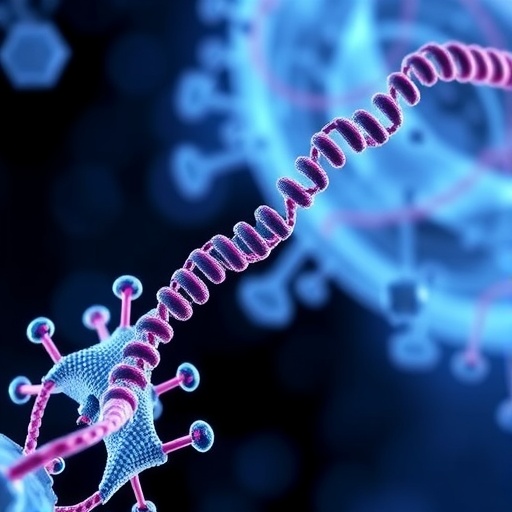Lysosomes have long been recognized as essential organelles within the realm of cellular biology. These membranous structures play a critical role as the terminal destination of the endocytic pathway, where they engage in the degradation of a spectrum of macromolecules, including both endogenous and exogenous materials. They serve as a vital mechanism through which damaged organelles and surplus cellular components are systematically dismantled and recycled. By acting as cellular disposal centers, lysosomes facilitate metabolic turnover and ensure the proper functioning of cells, ultimately contributing to overall organ physiology. Their functionality hinges on the integrity of their membrane, which serves as more than just a protective barrier; it is a sophisticated docking and activation platform for various signaling components, including the pivotal mTOR complex 1 (mTORC1).
mTORC1 has emerged as a master regulator of metabolism within the cell, driving pathways that affect growth, proliferation, and energy homeostasis. Its association with the lysosomal membrane underscores the significance of lysosomal function in metabolic signaling. A compromised lysosomal membrane not only disrupts the degradation processes but also has the potential to jeopardize cellular metabolism, leading to broader implications for cell survival and function. Numerous agents capable of destabilizing lysosomal membrane integrity have been identified, including various pathogens, nanoparticles, and pharmacological agents. The consequences of membrane permeabilization can be dire; it can lead to the leakage of proteases and essential cations into the cytosolic compartment, triggering adverse effects such as cell death pathways and the activation of innate immune signaling cascades.
In addition to membrane stabilization mechanisms, various pathways are in place to repair damaged lysosomes. These repair processes are crucial, as they mitigate the risks associated with lysosomal damage and restore cellular homeostasis. Severely compromised lysosomes are subjected to an autophagic process known as lysophagy, where damaged organelles are selectively degraded. This autophagic response ensures that dysfunctional lysosomal components are removed, thus preventing their adverse effects on cellular health. Furthermore, the cell has developed transcriptional programs that respond to lysosomal damage, orchestrating an increase in lysosome biogenesis to replenish the pool of functional lysosomes. These adaptive responses are pivotal in maintaining a balance between lysosomal degradation and biogenesis.
The maintenance of lysosomal membrane homeostasis is fundamentally tied to diverse aspects of cell function, physiological states, and the pathogenesis of various diseases. Disruption of lysosomal integrity is increasingly being linked to several disorders, including neurodegenerative diseases, metabolic syndromes, and lysosomal storage disorders. With aging, the propensity for lysosomal membrane destabilization increases, thereby highlighting the importance of these organelles in the aging process. The emerging narrative illustrates that lysosomal dysfunction is not merely a consequence of disease but may also drive pathophysiological changes, creating a cycle of degeneration.
The exploration of lysosomal membrane repair mechanisms has uncovered an array of novel strategies employed by cells to restore lysosomal function after perturbation. Recent research indicates that cells utilize specific proteins and pathways uniquely adapted to identify and rectify lysosomal damage. For instance, certain proteins have been identified that associate with damaged lysosomal membranes, facilitating their repair and stabilization. This understanding not only deepens our knowledge of cellular resilience in the face of adversity but also opens up potential therapeutic avenues to exploit these mechanisms for clinical benefit.
In the context of therapeutic exploitation, the ability to induce lysosomal membrane permeabilization (LMP) poses a compelling opportunity. Several therapeutic strategies currently in development aim to selectively compromise lysosomal membranes in order to induce cell death in malignant cells or pathogens. This strategy targets the vulnerabilities of diseased cells while sparing healthy tissues, thereby minimizing collateral damage during treatment. As researchers continue to unravel the complexities of lysosomal functions, the potential for developing targeted therapeutic interventions becomes more apparent.
Moreover, the intricate interplay between lysosomal function, cellular signaling pathways, and metabolic homeostasis presents an appealing avenue for exploration. By understanding the nuances of how lysosomes engage with various cellular signaling networks, researchers can devise strategies to manipulate these interactions to promote desired therapeutic outcomes. As such, the role of lysosomes transcends mere waste management; it encapsulates a broader narrative of cellular regulation, signaling, and homeostasis.
The implications of maintaining lysosomal membrane homeostasis extend beyond basic biology, offering insights into potential therapeutic interventions for a variety of diseases associated with lysosomal dysfunction. Regulating lysosomal integrity could play a vital role in therapeutic approaches targeting metabolic disorders, wherein restoring lysosomal function may have the potential to alleviate symptoms or even halt disease progression. Additionally, targeting the repair mechanisms of lysosomes may emerge as a viable strategy to rejuvenate cellular function in aging and degenerative diseases.
In summary, the exploration of lysosomal membrane homeostasis and repair mechanisms provides profound insights into cellular functionality, physiology, and disease progression. The ongoing research in this domain promises to yield new therapeutic opportunities that leverage the unique attributes of lysosomes. As our understanding of these vital organelles deepens, we are poised to potentially harness their properties in the fight against complex diseases, thereby enhancing human health and longevity. The intricate dynamics of lysosomal membranes and their implications for cellular metabolism will continue to be a focal point for researchers and clinicians alike, signaling a burgeoning era of therapeutic innovation rooted in lysosomal biology.
Lysosomes, once considered merely cellular garbage disposals, are now recognized as integral to maintaining cellular homeostasis and signaling pathways. Their ability to regulate not only their own integrity but also influence broader cellular functions has positioned them at the forefront of research in cellular biology and medicine. As knowledge in this area expands, so too does the promise of using lysosomal biology as a therapeutic target for diseases that have long resisted effective treatments.
Subject of Research: Lysosomal membrane homeostasis and its implications in physiology and disease.
Article Title: Lysosomal membrane homeostasis and its importance in physiology and disease.
Article References:
Radulovic, M., Yang, C. & Stenmark, H. Lysosomal membrane homeostasis and its importance in physiology and disease.
Nat Rev Mol Cell Biol (2025). https://doi.org/10.1038/s41580-025-00873-w
Image Credits: AI Generated
DOI: 10.1038/s41580-025-00873-w
Keywords: Lysosomes, membrane integrity, mTORC1, autophagy, lysophagy, cell metabolism, organ physiology, aging, disease, therapeutic strategies.
Tags: cellular disposal mechanismsdegradation of macromolecules in lysosomesimpact of lysosomal dysfunction on metabolismimplications of lysosomal health in diseaseimportance of lysosomal membranes in cell functionlysosomal membrane destabilization agentslysosomal membrane integritylysosomal pathways in health and diseasemTORC1 and metabolic signalingorganelle recycling and turnoverrole of lysosomes in cellular healthsignaling components of lysosomal membranes





